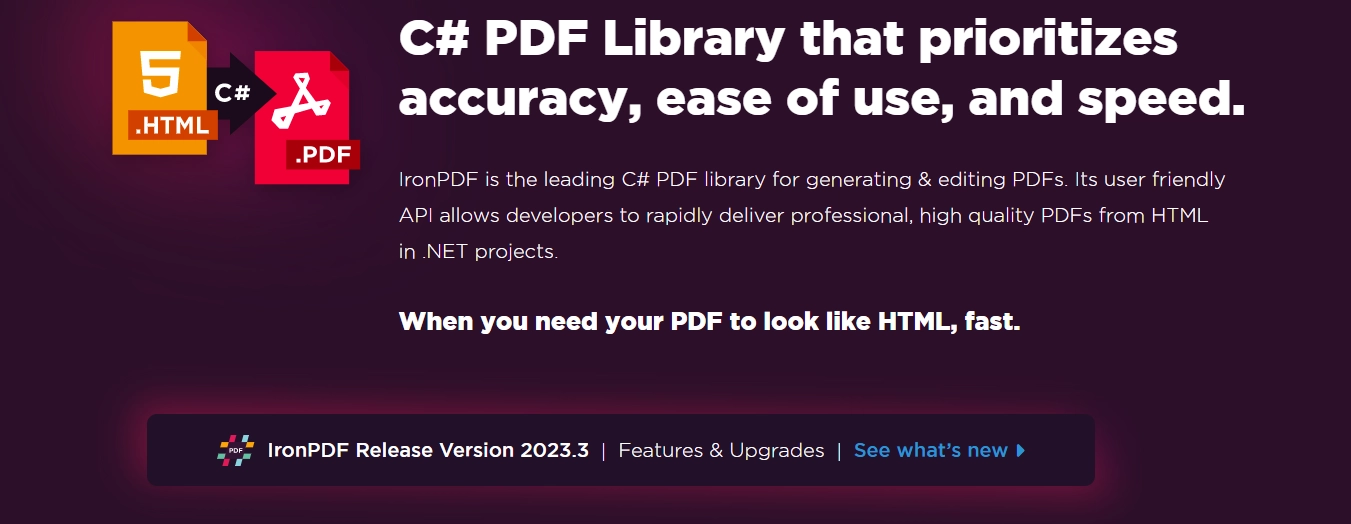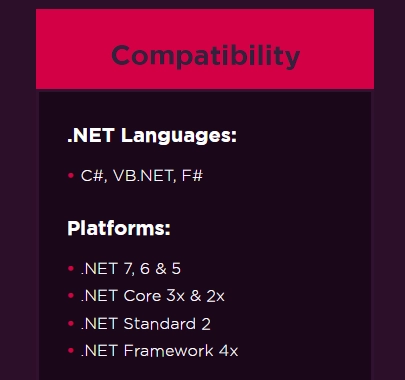Test in a live environment
Test in production without watermarks.
Works wherever you need it to.
As a developer, choosing the right framework can be critical for the success of your project. In this article, we'll dive deep into the differences between .NET Core and .NET Framework, two popular frameworks from Microsoft. In addition, we'll explore how IronPDF, a leading PDF library, is compatible with the latest .NET technologies. Finally, we'll briefly introduce two other remarkable libraries, IronXL and IronOCR.
.NET Framework, released in 2002, is a software framework developed by Microsoft. It provides a runtime environment, allowing developers to create Windows-based applications using various programming languages, such as C# and VB.NET. The .NET Framework's extensive library of pre-coded solutions and reusable components simplifies development and improves application performance.
.NET Core is an open-source, cross-platform, and modular framework launched in 2016. It is a lightweight and high-performance alternative to the .NET Framework, designed to support microservices and cloud-native applications. .NET Core enables developers to build applications that run on Windows, Linux, and macOS, using the same codebase.
The most significant difference between .NET Core and .NET Framework is their platform compatibility. While .NET Framework is restricted to Windows, .NET Core is cross-platform, enabling developers to build applications for Windows, Linux, and macOS.
.NET Core has been optimized for better performance, making it a faster and more efficient framework than .NET Framework. The modular design of .NET Core ensures that applications only include necessary components, reducing the overall size and improving load times.
.NET Core offers a smaller set of libraries and APIs compared to the .NET Framework. However, .NET Core's libraries are more modular and are updated more frequently. The .NET Standard, a common set of APIs for both frameworks, helps bridge the gap, allowing developers to create libraries that work across .NET Core and .NET Framework.
Developing and deploying applications with .NET Core is more straightforward than with .NET Framework. .NET Core's command-line interface (CLI) offers a consistent experience across platforms, simplifying the development process. Additionally, .NET Core's side-by-side deployment allows for multiple application versions to coexist without conflicts.

IronPDF is a powerful PDF library that enables developers to create PDFs from HTML, read, edit, and extract content from PDF files within their .NET applications. It is fully compatible with both .NET Core and .NET Framework, ensuring that developers can leverage its powerful features regardless of their chosen framework. IronPDF's support for HTML to PDF conversion, PDF manipulation, and seamless integration with .NET technologies make it an essential tool for modern developers.

IronXL is a versatile Excel library that enables developers to read, write, and manipulate Excel files in .NET applications. It offers an intuitive API and supports various file formats, including XLS, XLSX, CSV, and TSV.
IronOCR is an advanced Optical Character Recognition (OCR) library designed for .NET developers. It can read text from images and PDFs, supports multiple languages and offers superior accuracy and performance.
When comparing .NET Core and .NET Framework, it is essential to consider factors such as platform compatibility, performance, library support, and development and deployment processes. While .NET Core is more suitable for modern, cross-platform applications and offers better performance, .NET Framework remains a viable choice for traditional Windows-based applications with extensive library support.
Incorporating powerful libraries like IronPDF, IronXL, and IronOCR into your .NET applications can significantly enhance their functionality. IronPDF's compatibility with both .NET Core and .NET Framework ensures developers can leverage its comprehensive PDF capabilities in their projects, regardless of the chosen framework.
As the world of .NET continues to evolve, staying informed about the latest technologies and libraries is crucial for developers. By understanding the differences between .NET Core and .NET Framework and utilizing cutting-edge tools like IronPDF, IronXL, and IronOCR, developers can build robust, efficient, and feature-rich applications to meet the demands of the modern software landscape.
9 .NET API products for your office documents








